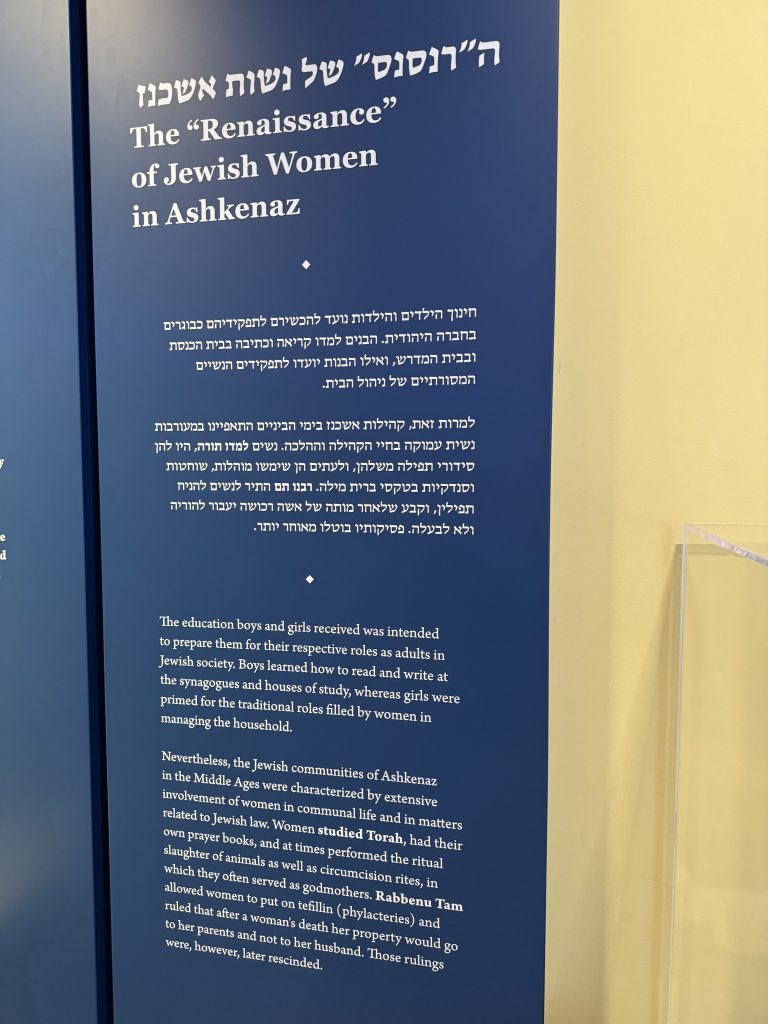Text Panel
The “Renaissance” of Jewish Women in Ashkenaz
The education boys and girls received was intended to prepare them for their respective roles as adults in Jewish society.
Boys learned how to read and write at the synagogues and houses of study,
whereas girls were primed for the traditional roles filled by women in managing the household.
Nevertheless, the Jewish communities of Ashkenaz in the Middle Ages were characterized
by extensive involvement of women in communal life and in matters related to Jewish law.
Women studied Torah, had their own prayer books, and at times performed the ritual slaughter
of animals as well as circumcision rites, in which they often served as godmothers.
Rabbenu Tam allowed women to put on tefillin (phylacteries) and ruled that after a woman’s death
her property would go to her parents and not to her husband.
Those rulings were, however, later rescinded.

